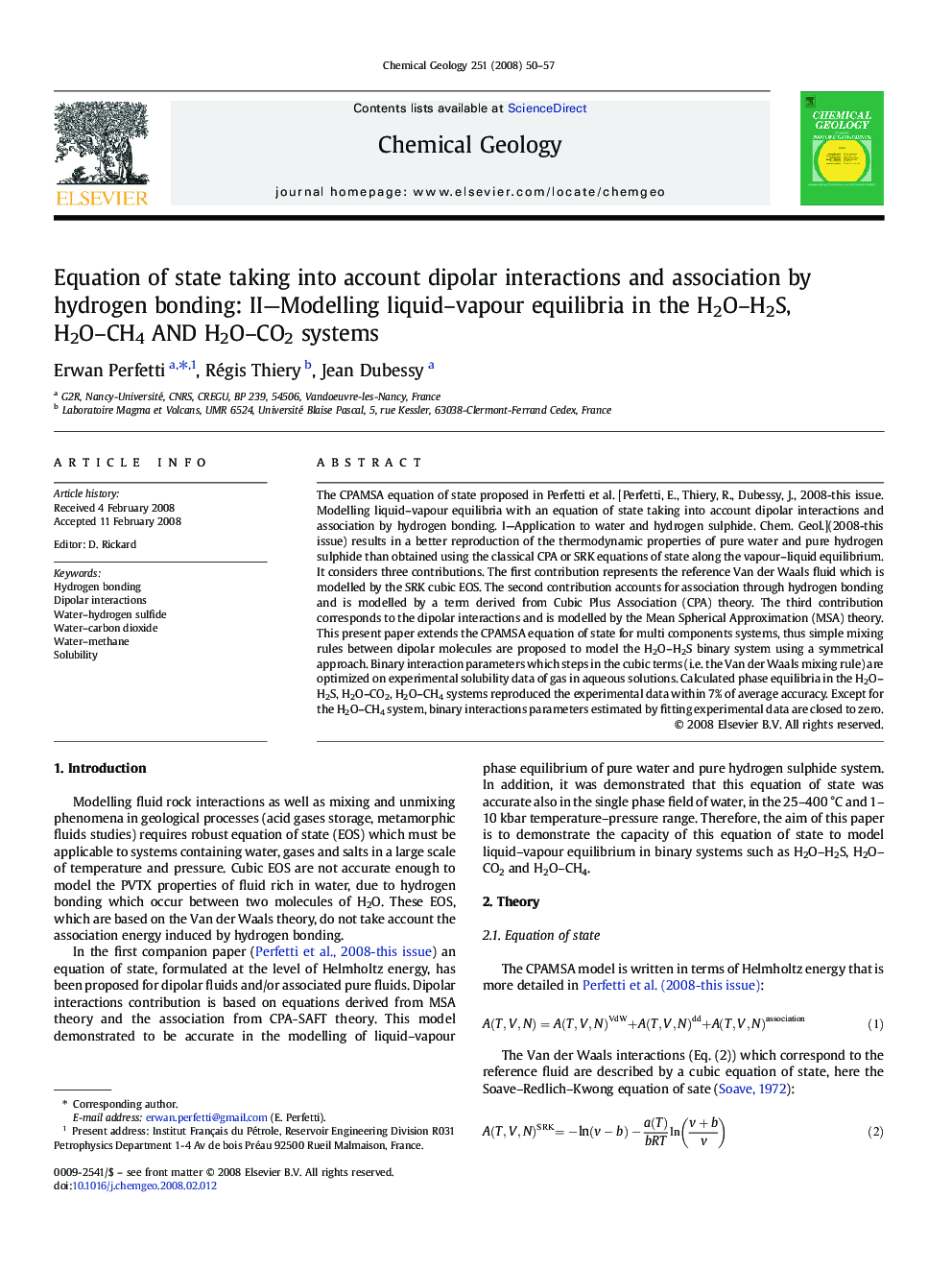| کد مقاله | کد نشریه | سال انتشار | مقاله انگلیسی | نسخه تمام متن |
|---|---|---|---|---|
| 4700693 | 1637729 | 2008 | 8 صفحه PDF | دانلود رایگان |

The CPAMSA equation of state proposed in Perfetti et al. [Perfetti, E., Thiery, R., Dubessy, J., 2008-this issue. Modelling liquid–vapour equilibria with an equation of state taking into account dipolar interactions and association by hydrogen bonding. I—Application to water and hydrogen sulphide. Chem. Geol.](2008-this issue) results in a better reproduction of the thermodynamic properties of pure water and pure hydrogen sulphide than obtained using the classical CPA or SRK equations of state along the vapour–liquid equilibrium. It considers three contributions. The first contribution represents the reference Van der Waals fluid which is modelled by the SRK cubic EOS. The second contribution accounts for association through hydrogen bonding and is modelled by a term derived from Cubic Plus Association (CPA) theory. The third contribution corresponds to the dipolar interactions and is modelled by the Mean Spherical Approximation (MSA) theory. This present paper extends the CPAMSA equation of state for multi components systems, thus simple mixing rules between dipolar molecules are proposed to model the H2O–H2S binary system using a symmetrical approach. Binary interaction parameters which steps in the cubic terms (i.e. the Van der Waals mixing rule) are optimized on experimental solubility data of gas in aqueous solutions. Calculated phase equilibria in the H2O–H2S, H2O–CO2, H2O–CH4 systems reproduced the experimental data within 7% of average accuracy. Except for the H2O–CH4 system, binary interactions parameters estimated by fitting experimental data are closed to zero.
Journal: Chemical Geology - Volume 251, Issues 1–4, 1 June 2008, Pages 50–57